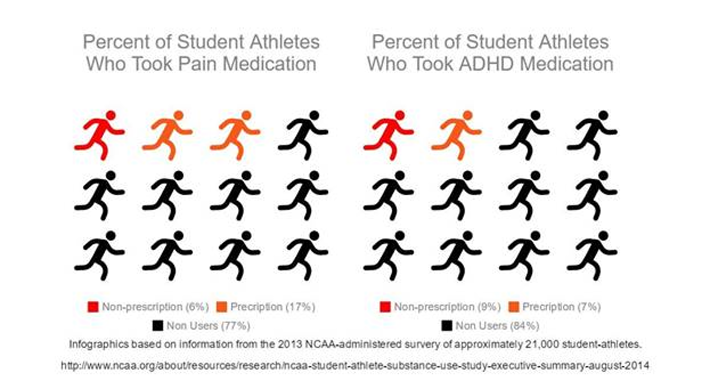Guide to Addictive Substances for Young Athletes

Young athletes can face more exposure to substance abuse than many of their peers by being invited to parties on weekends, taking performance enhancing drugs for their sport and using pharmaceutical drugs resulting from an injury.
Identifying Substance Abuse in Young Athletes
It is sometimes difficult to differentiate normal teen behavior from those behaviors exhibited by those who are abusing drugs. While certain behaviors may be seen as simply teen angst, others are clear signs there is more going on. Changes in behavior and patterns to look for include:
- Changes in sleep schedule or sleep patterns
- Alarming weight gain or loss
- Violent mood swings
- Aggression towards others
- Nervousness or anxiousness
- Swelling of feet or ankles
- Drowsiness at irregular times of day
- Becoming secluded from the family or avoiding family members
- Decline in grades
Read more at The Taylor Hooton Foundation and Youth.gov. In the event you observe one or more of these signs, discuss it with your teen and get them assessed by their health care practitioner.
Inadequate Education About Drugs for Young Student Athletes
Drug education can play a huge role in protecting teenagers from experimental and dangerous behavior with drugs and alcohol.
The National Institute on Drug Abuse found “Early intervention with risk factors (e.g., aggressive behavior and poor self-control) often has a greater impact than later intervention by changing a child's life path (trajectory) away from problems and toward positive behaviors”.
While this is largely agreed upon, certain schools and communities may simply lack the ability to educate teens and young adults due to a variety of issues which include:
- The cost of drug education
- Lack of time due to focus on test scores
- Students not paying attention to lessons and/or lessons not being engaging enough
As a result, some teens are undereducated on the risks and effects of drug abuse and this can be a contributing factor. This is why it is so important for parents to be educated and able to educate their children.
Read more: NIDA Preventing Drug Use among Children and Adolescents
Resources
NIDA for Teens Pro Athletes, Marijuana, and Opioids
The Coaches Playbook Against Drugs
National Institute of Health Teachers Guide
Why Do Teens Use Drugs
How Big Is the Problem?
While reports from different sources point to a decrease in young athlete drug abuse, due to regulated drug testing, there are still certain substances that have become more prevalent in abuse in recent years. In addition, certain sports and divisions may have higher rates of use than others.

Resources
Student-Athlete Substance Use Study: Executive Summary August 2014
NCBI Drug Abuse in Athletes
Athletes and Illegal Drug Use
Increased Danger for Intoxicated Young Athletes
Potential risks to young athletes from using drugs include:
- Higher risk of injury
- Damaging joints due to training while intoxicated
- Risk of high blood pressure
- Anger issues affecting other areas of their life
- Increased risk of stroke
- Increased risk of heart attack
- Irregular heart rate
- An enlarged heart
- Stunted growth from Performance Enhancing Drugs (PEDs)
Resources
Steroid Use Among High School Athletes
Youth Sports Safety Statistics
Impact of Steroids on Young Athletes
Information on Concussions for Young Athletes


